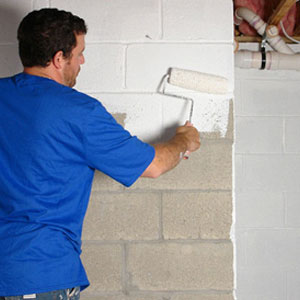
Resources
- Home
- Cheap Waterproof Walls
- How to Waterproof Basement Walls
- How to Waterproof Walls
- Waterproof Baesment Walls
- Waterproof Basement Walls
- Waterproof Bathroom Walls
- Waterproof Brick Walls
- Waterproof Concrete Walls
- Waterproof Exterior Walls
- Waterproof Foundation Walls
- Waterproof Garage Walls
- Waterproof Kitchen Walls
- Waterproof Wall Paint
- Waterproof Wall Panels
- Waterproof Walls Coating
- Waterproof Walls Companies
- Waterproof Walls Covering
- Waterproof Walls DIY
- Waterproof Walls FAQs
- Waterproof Walls Prices
How to Waterproof Walls
Waterproofing your basement or any other walls in your home is a smart way to protect against problems related to moisture. While many homeowners assume that it's going to cost a lot to waterproof their walls, this process is actually quite affordable. That's especially true when you take into consideration:
- That's it possible for you to waterproof your own walls instead of paying for a contractor to do it.
- If you don't waterproof your walls and end up with mold growth in your home, you will have to pay thousands of dollars for a restoration company to completely remove it.
- Doing a good job means you will only have to waterproof your walls one time.
Exterior vs. Interior Waterproofing
It's actually possible to waterproof the exterior, interior or both areas of your home. While most homeowners have their own opinion about which option or combination works best, keep in mind that exterior waterproofing is the more expensive of the two. Additionally, it will likely require significantly more work than waterproofing interior walls. Because of these two factors, it's an option you likely want to skip or hold off on for now. The only exception to that rule of thumb is if you have significant flooding problems outside of your home.
How to Prepare Interior Walls for Waterproofing
If you're simply dealing with the standard interior moisture issues that most homeowners face, you'll be very pleased with the results you get from waterproofing your basement walls and any others where you're having problems. The first step to waterproofing your walls is to check them for holes or cracks. Even if you're not currently having any issues with leaks, it's important to fill any holes or cracks before you begin applying waterproof coating to the wall.
If you discover small holes or cracks, use a latex cement product to fill them. If you find a large hole or crack, it's a good idea to mix a batch of mortar and then use it as filler. After you've taken care of any holes or cracks, you will want to clean off the walls. This includes everything from dirt to dust to any other debris on the walls. Using a wire brush on the walls will make it easy for you to ensure that you clear off everything.
How to Waterproof Walls in Your Basement or Other Rooms
Once you've finished prepping your walls, you can begin applying your waterproofing solution to it. Depending on the specific surface you are waterproofing, you will want to use a spray or paint. With either option, the key to getting the best results from waterproofing is to cover every inch of the wall. If you rush through this project and miss spots, this will leave your wall vulnerable to moisture. Because thoroughness is so important, you will want to apply at least two coats of spray or paint. During the application of both coats, it's a good idea to start at the bottom of the wall and slowly work your way up to the top.
